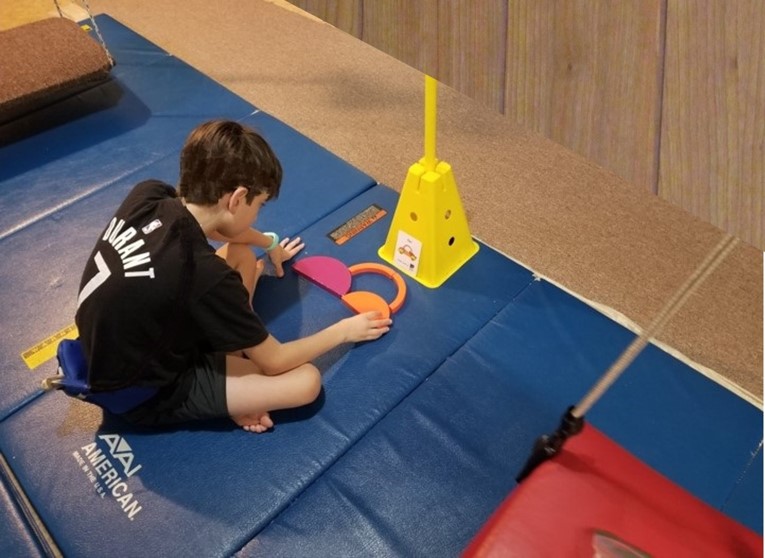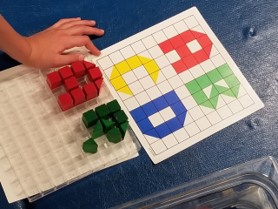
Brain wiring includes language with visual input. We often look at artwork and use of symbols as examples of how vision works to help prompt our thoughts. However, visual perceptual skills do not work in isolation. Language helps the learner better understand what is shown. For example, the youngster in the photo above will need to break down the task card into spatial language terms. He needs to think through language concepts such as “left, right, on top of, under” for success in building the model shown. Imagining movement of the pieces as he builds the project requires including language with visual perceptual skills. Most of the brain’s pathways that carry information about vision are located near pathways that carry language.
The ability to link visual images with language plays a huge roll in school. Reading skills begin with teaching preschoolers to pair visual images with language as they learn to draw letters of the alphabet.
Ideas of how to form lines that go “up, down, around and across” strengthen the need to pair language with visual images. Writing letters and numbers include the need for this type of pairing. In terms of schoolwork, the ability to pair visual perceptual skills with language progresses from phonics to reading. Even advanced subjects such as chemistry, algebra and physics involve the ability to pair symbols with their basic elements.

The ability to link visual input with language also impacts social and emotional skills. For example, in the photo below, the visual image shows the delight of both youngsters. They are showing excitement by their gestures and body language. Open-mouthed expressions and arms raised in a “victory” posture shows their excitement.
The ability to interpret body language is an example of how linking visual input with language can impact social skills.

When working with children who have developmental issues that impact their ability to process sensory information, special attention needs to be given to their ability to include language with visual perceptual skills.
For more information you may want to visit the following blog posts:

Comments are closed.